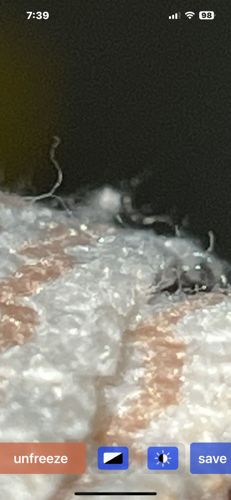Dust Mite
Scientific Name: Dermatophagoides spp.
Order & Family: Order: Sarcoptiformes; Family: Pyroglyphidae (commonly Dermatophagoides spp. like Dermatophagoides pteronyssinus or Dermatophagoides farinae)
Size: Microscopic, typically 0.2-0.3 mm (200-300 micrometers) in length

Natural Habitat
Indoor environments, particularly in bedding (mattresses, pillows), upholstered furniture, carpets, rugs, and curtains, where dead skin cells accumulate and humidity is often stable.
Diet & Feeding
Dust mites primarily feed on dead human and animal skin cells (dander), as well as other organic detritus found in household dust.
Behavior Patterns
Dust mites thrive in warm, humid environments, especially in bedding, upholstered furniture, and carpets. They are not parasites and do not bite or sting. Their primary activity is feeding on shed skin cells and reproducing. They are microscopic and not visible to the naked eye, so their presence is usually only noticed through allergic reactions. Their life cycle is relatively short, around 2-3 months, but they reproduce quickly.
Risks & Benefits
Risks: Dust mites are a common trigger for allergies and asthma. Their feces and decaying body parts contain proteins that can become airborne and inhaled, leading to symptoms like sneezing, runny nose, itchy eyes, skin rashes (eczema), and respiratory issues. They pose no direct physical harm (like biting); the risk is solely related to allergic reactions. Benefits: None significant to humans; they are part of the decomposer community in indoor ecosystems, breaking down organic matter, but this is generally overshadowed by their allergen status.
Identified on: 8/29/2025